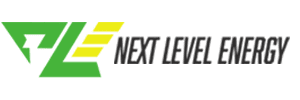- What is a Micro-Inverter – a micro-inverter can also be referred to as a solar micro inverter. It is a piece of electronic equipment used in PV cells for changing the waveform of current i.e. changing Direct current (DC) to Alternating current (AC).
- What is a String Inverter? – String inverters can also be referred to as centralized inverters. It also converts Direct current (DC) to Alternating current (AC) but here the inverter is connected to a string of solar panels.

When a micro-inverter is better than string inverters
- Easy to install and use
- You don’t need an expert to install it for you. Micro-inverters can be easily set-up by you thereby saving you the cost of paying experts to do it for you.
- It does not require any additional hardware or manual configuration. It is Plug-and-play for the most part.
- Micro-inverters are connected to an AC source carrying normal household voltages. Whereas, central inverters demands connecting multiple strings of thick DC wires from the solar panels to the central inverter through a tunnel.
- The installations of central-inverters demand 4-8 categories of high voltage DC wires which need to be connected correctly to the inverter.
- In the installations of string-inverters, the installer has to calculate line losses to determine the size of the wire that will be required to connect it to the panels. Also, the panels, central inverters, and the racking all require different grounding system.
- Even for the loading of the string-inverters, it requires that the person installing it design the system to be able to load balance each strand of panels.
- In a central-inverter, when a panel malfunctions, it is going to be hard to determine which panel exactly in the system is malfunctioning without testing each one of them with a micrometer.
- Effectiveness
- Micro-inverters make the best use of the power output of each individual panel resulting in an additional power of 15% per panel.
- Central inverters will not function as it should if there is any shading whereas a micro inverter system will function optimally.
- If a panel malfunction in a micro-inverter system, it will not affect the whole system and the exact panel that is malfunctioning can be easily determined.
- Safety
- Micro-inverters are safe to use, unlike string-inverters which expose the person installing it to hundreds of volts of unsafe DC power while micro-inverters do not.
- Micro-inverters are safe to handle as they do not produce power when they are not connected to your solar panels. On the other hand, a string inverter needs to be handled safely because they produce power as soon the panels are exposed to light.
- A string inverter can be wired incorrectly in a lot of ways which could lead to severe damage or even kill the installer.
- There is no way a micro inverter can be wired incorrectly because it is plug-and-play.
- Durability and Cost Effectiveness.
- Micro-inverters last for a very long time having an average lifespan of about 32 years and also a longer warranty of 25 years whereas central inverters have a shorter lifespan and a shorter warranty period of 10-12 years.
- The cost of maintenance for a string inverter can be more as it will need replacement in 10-15 years.

